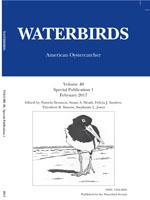Species distribution modeling has seen widespread use in ecology and conservation over the past two decades, and as a result many questions regarding the predictive capabilities of new techniques have been raised. One modeling approach that has gained popularity is Maxent, which uses presence-only data to model species distributions. Although Maxent is ordinarily used to model a species' fundamental niche at large scales (e.g., continental-scale), this technique was used to develop a predictive model for the realized niche and local breeding distribution of American Oystercatchers (Haematopus palliatus) in coastal New Jersey, USA. The transferability of the predictive model to locations outside training areas was examined in an effort to locate new breeding populations in previously unsurveyed areas. Initial model validation indicated that Maxent performed well, exhibiting good discrimination ability based on analyses of both training data (AUC = 0.95) and test data (AUC = 0.91). Ground surveys based on the final model located 185 previously unknown territorial pairs of American Oystercatchers, showing that Maxent was useful to locate new populations in alternative breeding habitats. However, when validated with an independent dataset, the Maxent model did not perform much better than random (AUC = 0.54), reporting high omission (0.76–0.93) and commission (0.40–0.83) error rates. The poor validation was attributed to source-sink dynamics rather than to errors in the modeling technique. Future researchers attempting to validate species distribution models with ground surveys should take into consideration metapopulation and source-sink theory in the design of surveys and interpretation of results.
How to translate text using browser tools
1 February 2017
Predicting American Oystercatcher (Haematopus palliatus) Breeding Distribution in an Urbanized Coastal Ecosystem Using Maximum Entropy Modeling
Thomas Virzi,
Julie L. Lockwood,
Richard G. Lathrop,
Steven M. Grodsky,
David Drake
ACCESS THE FULL ARTICLE

Waterbirds
Vol. 40 • No. sp1
February 2017
Vol. 40 • No. sp1
February 2017
American Oystercatcher
Haematopus palliatus
MaxEnt
model transferability
model validation
species distribution modeling




